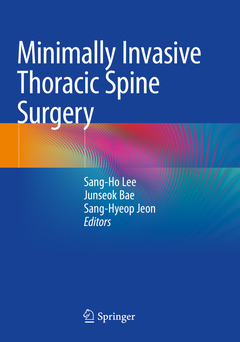Description
Minimally Invasive Thoracic Spine Surgery, 1st ed. 2021
Coordinators: Lee Sang-Ho, Bae Junseok, Jeon Sang-Hyeop
Language: English
Subject for Minimally Invasive Thoracic Spine Surgery:
Publication date: 12-2021
308 p. · 17.8x25.4 cm · Paperback
Publication date: 12-2020
308 p. · 17.8x25.4 cm · Hardback
Description
/li>Contents
/li>Biography
/li>Comment
/li>
Sang-Ho Lee, MD, PhD
Chairman, Wooridul Spine Hospital, Seoul, Korea
Founder and Honorary President, World Congress of Minimally Invasive Spinal Surgery and Techniques
Clinical professor of Anatomy, Yonsei University College of medicine
Junseok Bae, MD
President and Medical Director
Director, Wooridul International Minimally Invasive Spine Surgery Fellowship Program
Department of Neurological Surgery
Chungdam Wooridul Spine Hospital, Seoul, Korea
Sang-Hyep Jeon, MD
President and Medical Director
Department of Cardiovascular Surgery
Busan Wooridul Spine Hospital, Busan, Korea
Describes a wide variety of minimally invasive approaches
Covers procedures in cases of deformity and trauma as well as degenerative diseases
Includes many high-quality illustrations




